
Feel free to add tags, names, dates or anything you are looking for
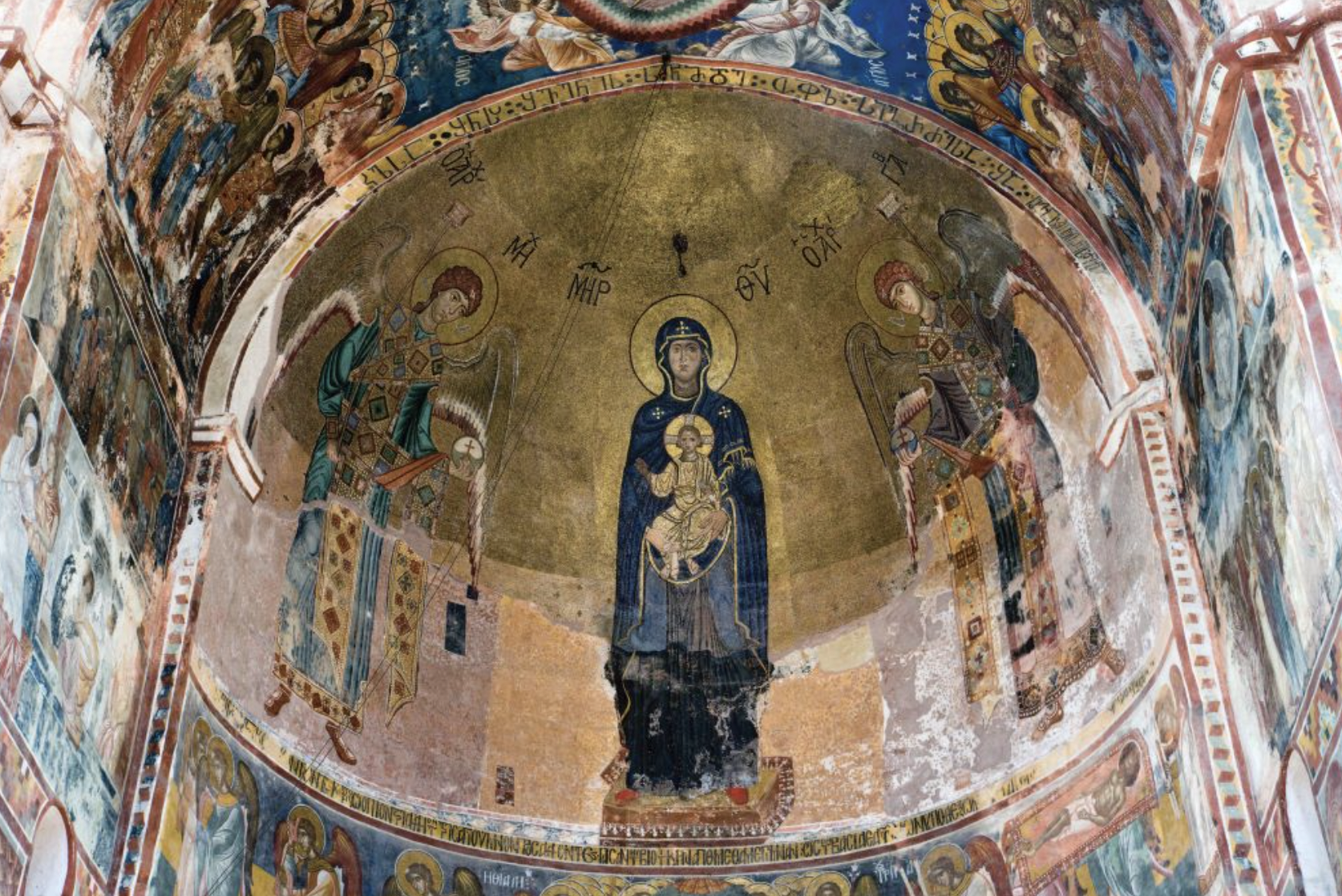
The Gelati Mosaic is one of the most notable architectural elements of the Gelati Monastery, a remarkable medieval complex that once functioned as a cultural and educational hub.
The idea of decorating the Church of the Mother of God with a mosaic was conceived by King David "the Builder." Creating an elaborate mosaic comparable to the legendary mosaics of Constantinople represented a bold challenge at the time. Initially, the altar was prepared for a fresco, but it was subsequently plastered to accommodate the mosaic commissioned by the king. In addition to the frescoes at Gelati, mosaic icons were also produced, with the icon of the Mother of God being the most notable example. Such an organic combination of mosaic and fresco is a rare occurrence, even in Byzantine cathedrals.
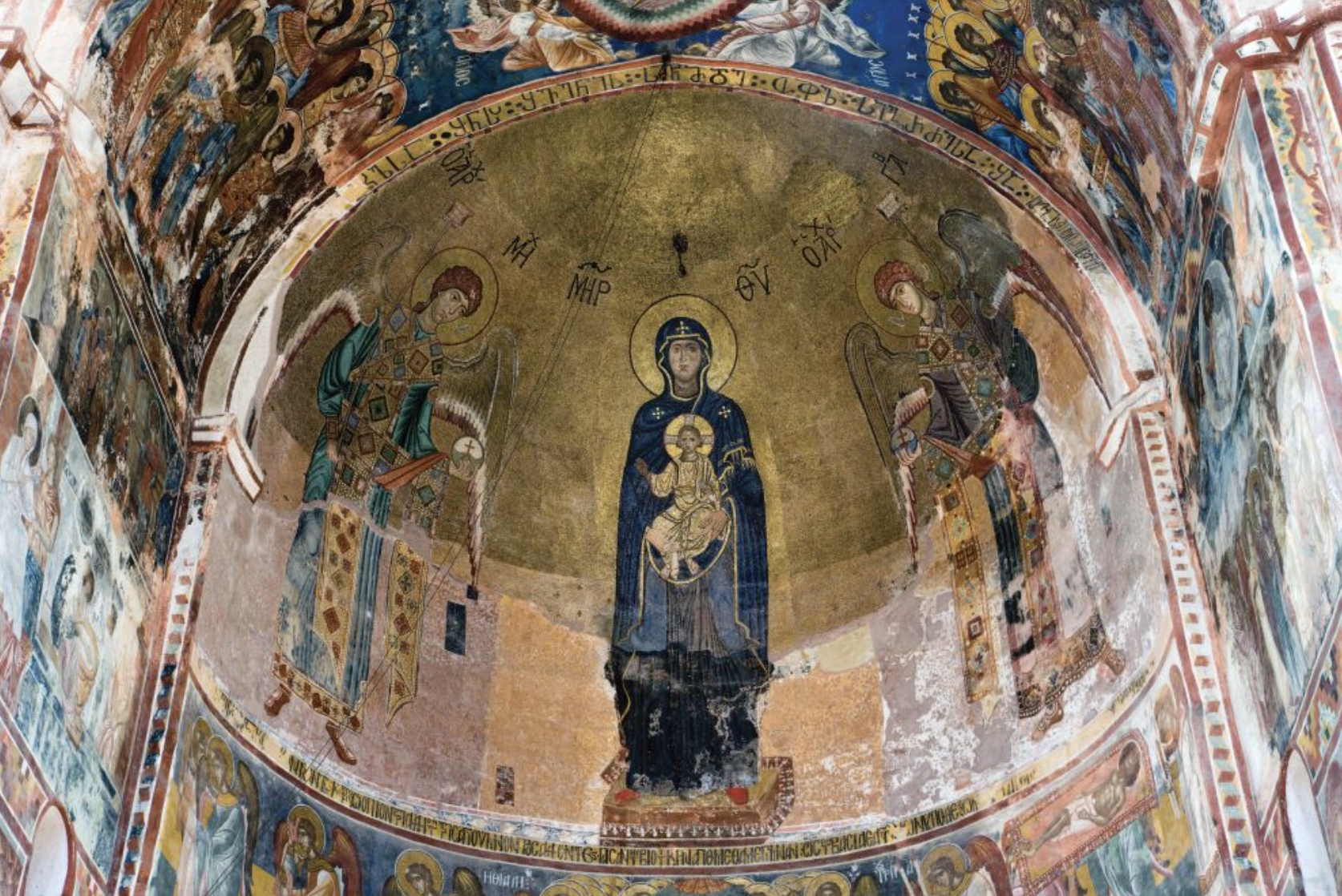
Gelati mosaic (general view)
The Gelati Mosaic dates back to the period between 1125 and 1130. Notably, among the few surviving medieval Georgian mosaics, this particular example has retained its original appearance.
The Gelati Mosaic is situated on the vaulted roof of the apse in the main cathedral. The composition, depicted on a golden background, is solemn, monumental, and representative. It portrays the Virgin and Child seated on a richly decorated podium, flanked by archangels. Despite the relatively limited area of the scene within the cathedral's vast interior, the significance of the images, their color palette, and the remarkable shimmer of the mosaic stones dominate the space. Collectively, these elements contribute to a spiritual atmosphere that seems to emanate from a divine source. During the celebration of the Eucharist, this atmosphere is further enhanced by the presence of other sacred objects.

Virgin with Child with Archangels - in the conch
While the height of the standing figures is nearly identical, the primary focus is on the central image of the Mother of God. This is further emphasized by the positioning of the archangels on the concave slope of the arch, which faces her. The Mother of God appears to emerge from the apse to assume her prominent position. Her figure is imposing, slightly offset from the center, which serves to soften the rigidity of the main axis of the composition. The face of the Mother of God was originally smaller in scale before the artist's intervention, which resulted in a modification of its artistic contour. It was customary to accentuate the central figure with light; however, in this instance, the master employed light to highlight St. Gabriel, or more accurately, his head, while the figure of the Mother of God is distinguished by her color. The robe of the Mother of God is depicted in blue against a golden background, which is dark and dense in color, while the archangels' robes are lighter in hue. St. Michael's robe is a bright emerald, while St. Gabriel's is a grayish ruby. White and silver are dispersed throughout the wings, appearing intermittently, with a series of golden feathers creating a radiant effect, thereby conveying a sense of lightness and animation.
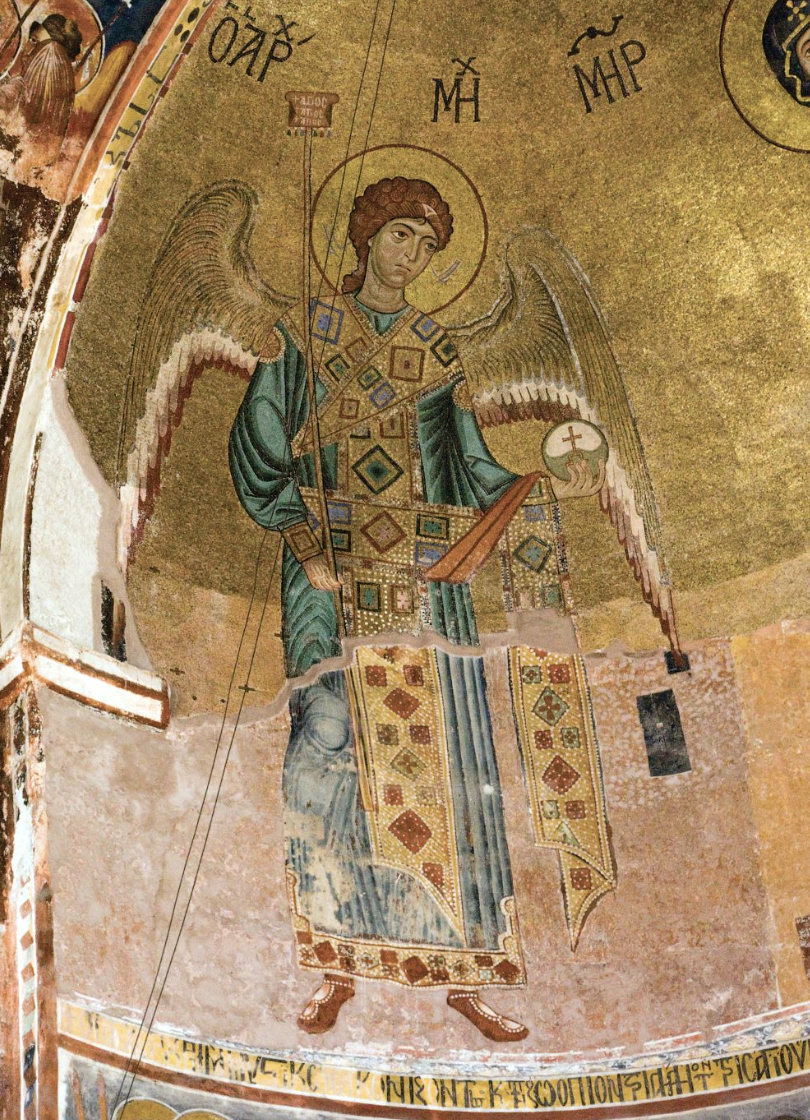
St. Michael
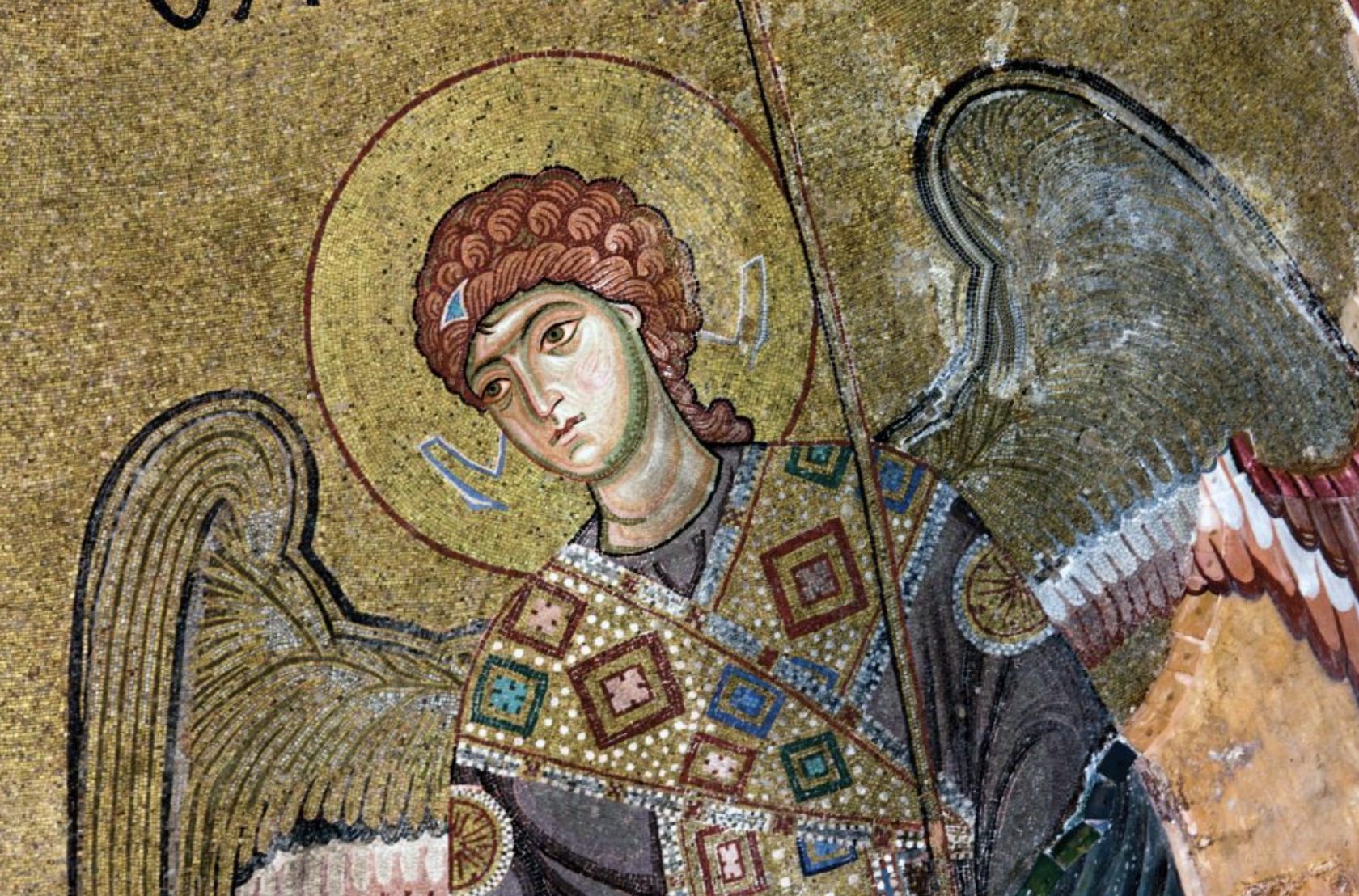
St. Gabriel. Detail
In comparison to the aforementioned images, the Mother of God is depicted in a more "earthly" manner. The master differentiates between the figures of the Mother of God and the archangels, offering an artistic approach that aligns with the functional role of the archangels. The initial design of Gabriel the Archangel's head underwent modification, with the introduction of a slight tilt that imbues the image with a sense of gentleness. The concentration of light above the saint's head serves to highlight his body and underscore his role as a "kind messenger." Michael the Archangel, frequently designated as the "head of the celestial cavalry" and the "punishing angel," is depicted distinctly. His countenance is characterized by a somber and austere expression, a dark complexion, and downturned corners of his mouth. The differentiation among the archangels imbues the overall scheme with heightened emotional resonance, a quality typically absent in other representations where they are depicted as indistinguishable figures. The Mother of God's face is marked by watery eyes that emit a luminous warmth, a gesture that evokes poignant lyricism. This emotional expression strikes a harmonious balance with the monumentality and strength that are hallmarks of Gelatian images, evoking the grandeur of Georgian painting.
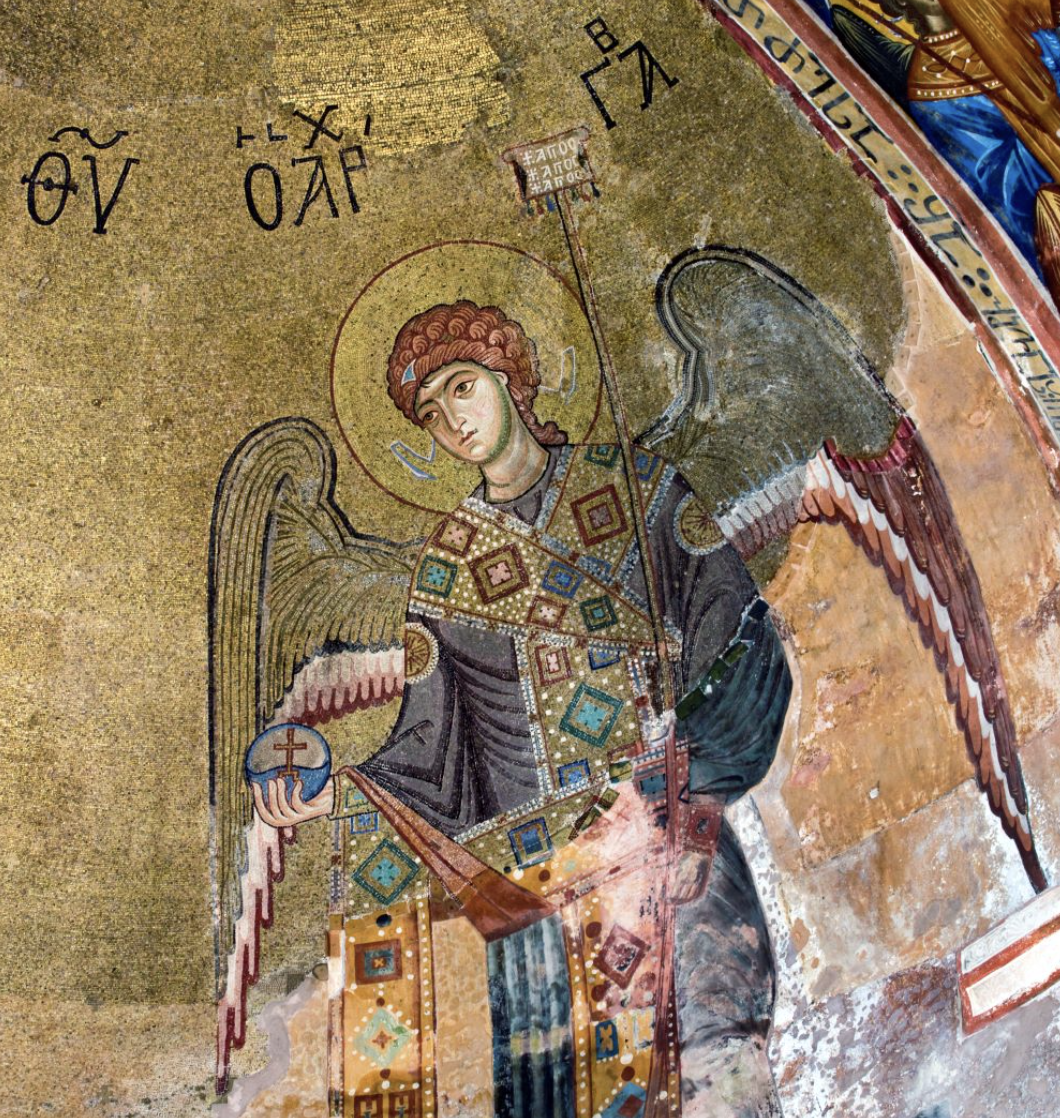
St. Gabriel
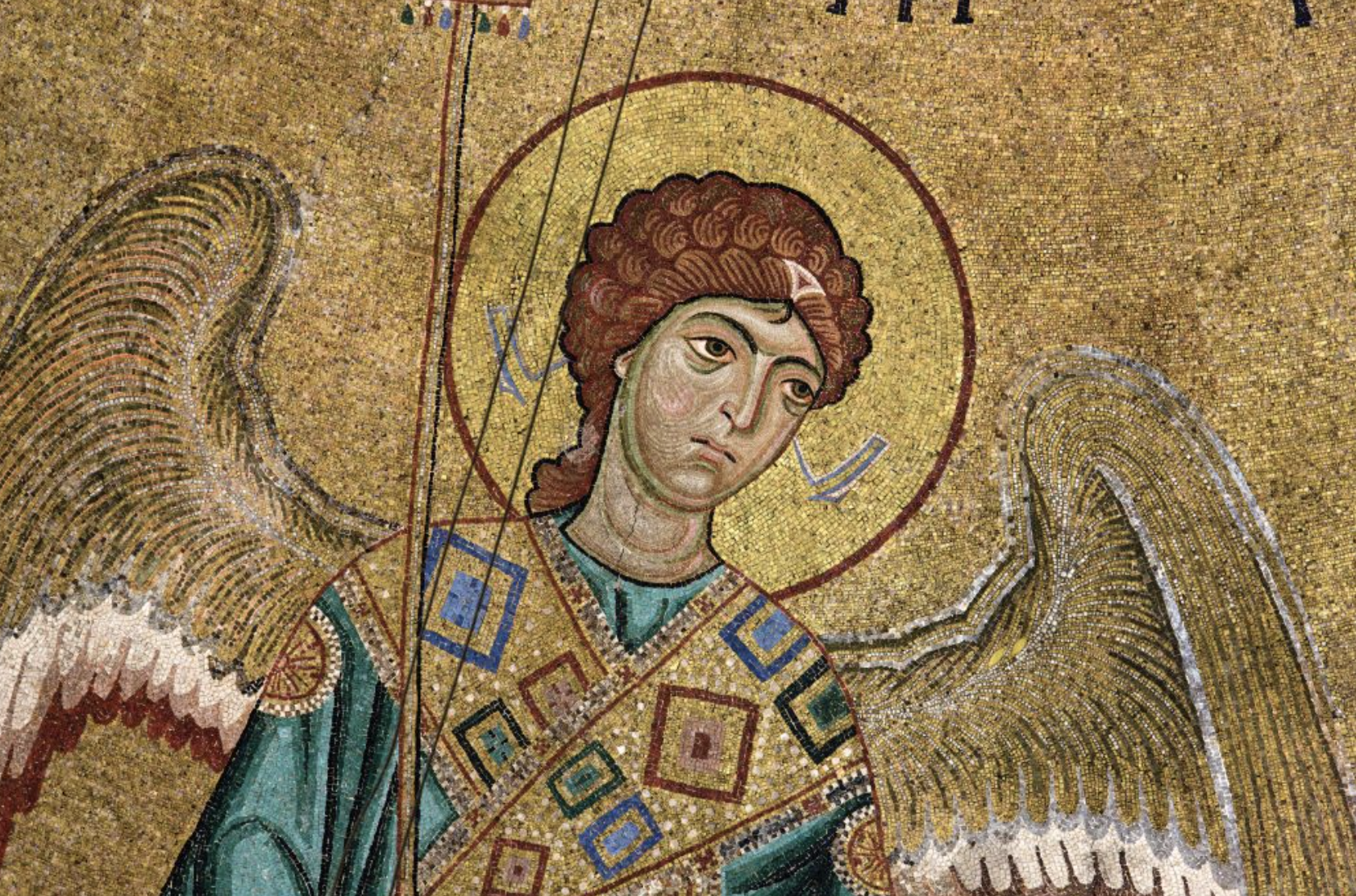
St. Michael. Detail
The Mother of God of Gelati is of the "Nikopea" type. The use of this type as a symbol of triumph and protection was particularly appropriate for the patronage of future victories by King David the Builder, a renowned warlord who commissioned the mosaic. However, the iconographic scheme characteristic of this type is disrupted in the Gelati Mosaic. The position of the Mother of God's hands is distinct, as she delicately lifts Christ with both hands from below, as if offering the enthroned infant to the whole mankind.
In the composition of the Gelati Mosaic, Christ is depicted as a child rather than an infant, and he is not shown with a shield or aureole. However, the gold lapel of the mantle, which extends over the hands of the Mother of God and surrounds the child's feet in the shape of an ellipse, should be interpreted as a representation of these attributes. Christ's right hand is extended laterally, creating a sense of openness in both the silhouette and the pose itself. The silvery-gold hue of his robes, coupled with the golden hue of the mosaic backdrop, imbues the Gelati composition with a profound sense of opulence.
The Gelati Mosaic adheres to the creative principles and ornamental criteria of Byzantine art, employing techniques such as optical illusion, pictorial and linear stylization, and the manipulation of light. Conversely, it also exhibits stylistic elements reminiscent of Georgian monuments. The soft, flowing line that constitutes the image of the Mother of God in the Gelati Mosaic is a common feature of Georgian iconography. According to Shalva Amiranashvili, the dynamism of this line represents a novel artistic technique that emerged during the reigns of David the Builder and his son, Demetrius the First, and continued to evolve during the era of King Tamar. In light of these considerations, the Gelati Mosaic can be regarded as a pioneering work within its historical context.
The primary hues of Gelati reflect local traditions, distinguishing it from Byzantine art and evoking memories of Georgian vitreous enamel from the Middle Ages. The mosaic incorporates locally sourced stones and a material that may be described as "painted glass." It is postulated that the painted glass may have been introduced to Georgia from Byzantium.
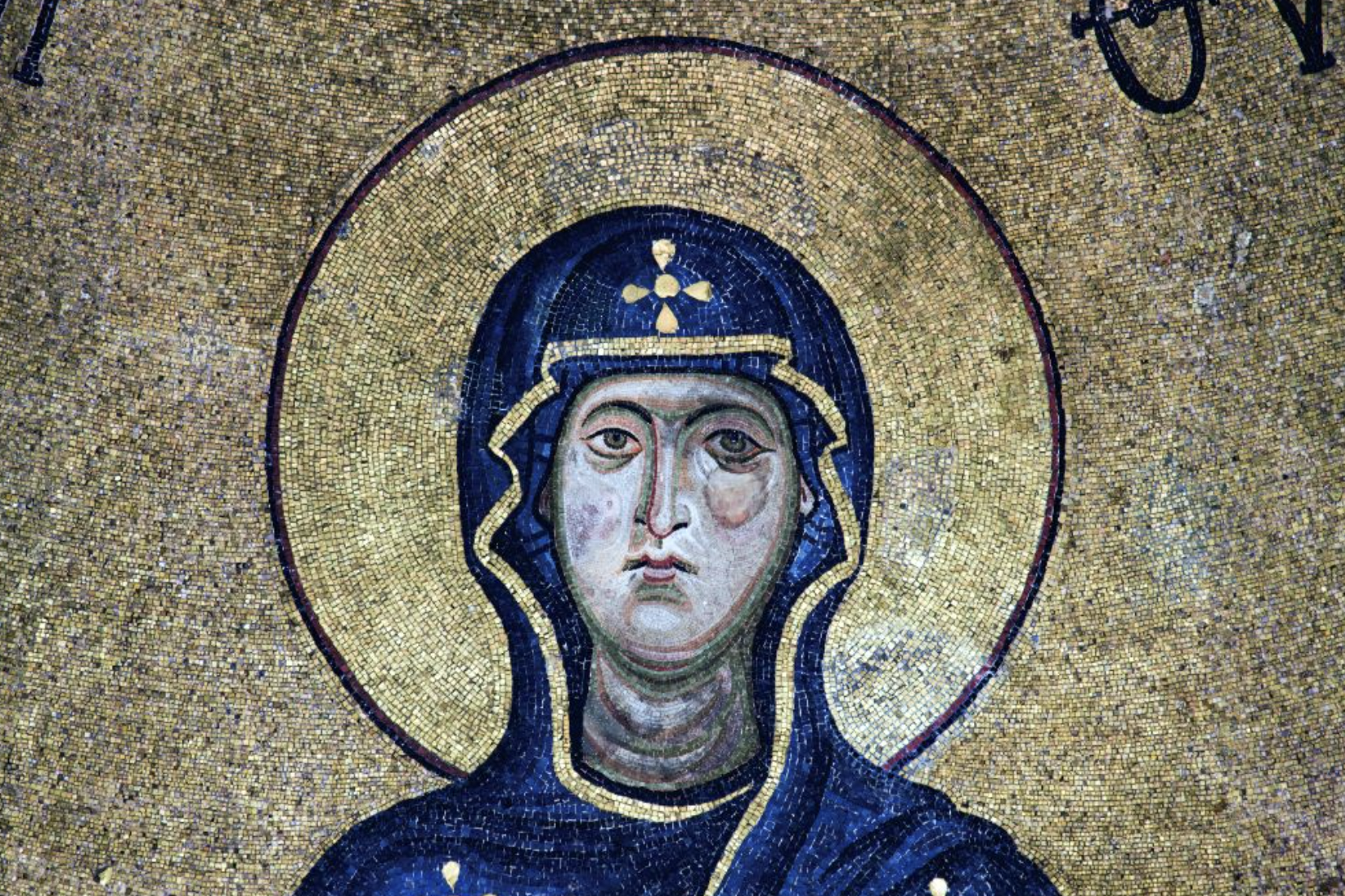
The face of the Mother of God
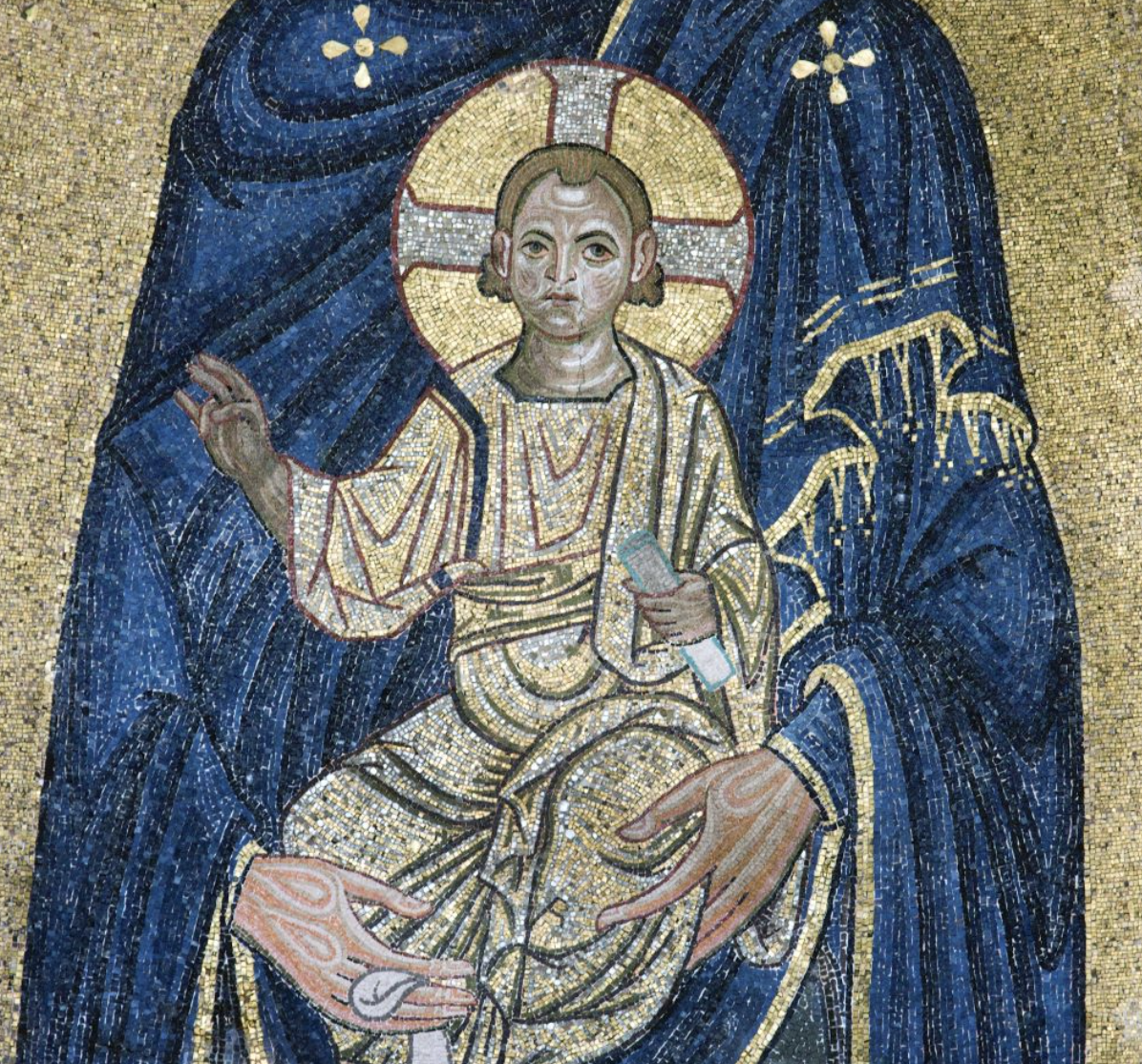
Image of Christ
The Gelati Mosaic exhibits an exceptional technical level in its construction, comprising three layers and a relatively thin assembly, with a direct assembly method. This is a key argument for the proposition that the mosaic was created in Georgia and not elsewhere. The patron of the mosaic was Georgian, and thus it is presumed that the artist who designed it was also Georgian, demonstrating exceptional Byzantine abilities. This individual was capable of reflecting both the epochal achievements of Byzantine art and the inventive solutions that arose in the heart of Georgia.
The Gelati Mosaic, and more broadly the Gelati frescoes, currently face a number of challenges. There is growing concern among Georgians and the international community regarding the condition of Gelati and its artistic heritage. For centuries, Gelati has been the object of respect and attention from Georgian rulers and ecclesiastical officials. To this end, representatives of Georgian and world culture are engaged in ongoing efforts to preserve this invaluable cultural asset. It seems reasonable to posit that Gelati will endure, and that its mosaic will continue to delight visitors.